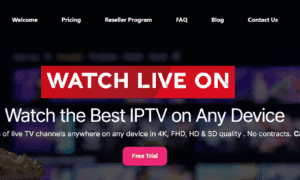Introduction
Generating email leads can be challenging and time-consuming. It requires personalization, catchy subject lines, easy-to-read content, and a strong call to action. It can be overwhelming to figure out which techniques work best for your business.
You may be struggling to find the right strategies to effectively grow your email list and capture leads. It can feel like a daunting task, especially if you are unsure of where to start or how to optimize your efforts.
This comprehensive guide provides you with proven strategies and techniques to successfully generate high-quality email leads. It covers everything from personalization and catchy subject lines to content upgrades and lead magnets.
With this guide, you will have the knowledge and tools to execute a successful email lead generation strategy and increase your lead capture and sales. Don’t miss out on the opportunity to scale up your email marketing program and reach your target audience effectively. So get ready to take your email marketing to the next level and unlock the potential of a thriving customer base.
Understanding the importance of email lead generation
Email lead generation is an important aspect of any effective marketing strategy. It plays a significant role in attracting and capturing potential customers’ interest in products or services. By capturing the contact information of potential customers, businesses can not only expand their customer base but also nurture and cultivate relationships with leads.
Here are a few reasons why it is important to prioritize this strategy:
High ROI: Email marketing consistently proves to be one of the most cost-effective methods of lead generation. With a well-planned email campaign, businesses can achieve a high return on investment.
Personalization and segmentation: Emails allow businesses to craft personalized and targeted messages tailored to different customer segments. This level of customization helps build meaningful connections with potential customers, increasing the likelihood of conversion.
Building credibility and trust: Regularly sending valuable content and updates via email helps establish your brand as a credible and trustworthy source of information. This, in turn, builds trust with your audience and increases the chances of them engaging with your business.
Direct communication: Email provides a direct and personal way to communicate with potential customers. It allows businesses to deliver targeted and tailored messages to individuals who have expressed interest or shown potential in their products or services.
Cost-effective: Compared to traditional marketing methods, email lead generation is highly cost-effective. Building an email list and sending targeted campaigns is relatively inexpensive, making it accessible to businesses of all sizes.
Increased conversion rates: Leads generated through email have higher conversion rates compared to other channels. By nurturing leads with relevant and timely content, businesses can guide them through the sales funnel and ultimately turn them into paying customers.
Data-driven approach: Email marketing platforms provide valuable data and insights, allowing businesses to track and analyze the success of their email campaigns. This data can help optimize future campaigns, ensuring maximum engagement and conversion rates.
Benefits of utilizing email for lead generation
Email is a powerful tool that can greatly contribute to lead generation for businesses. Some of the benefits of utilizing email for lead generation include:
- Targeted audience: With email marketing, businesses can segment their audience and send personalized messages to specific demographics or customer segments. It enables businesses to tailor their message to resonate with the needs and interests of their target audience, resulting in higher conversion rates.
- Automation and efficiency: Email marketing platforms offer automation features that streamline the lead generation process. Businesses can set up automated email campaigns that nurture leads, send follow-ups, or deliver specific content based on customer actions. This automation saves time and effort while ensuring consistent and timely communication with potential leads.
- Measurable results: Businesses can monitor open rates, click-through rates, and conversion rates to gauge the effectiveness of their lead-generation efforts. These insights enable businesses to refine their strategies and optimize their campaigns for better results.
- Lead nurturing: Email allows businesses to build relationships and nurture leads over time. By delivering valuable and relevant content through email campaigns, businesses can establish credibility, gain trust, and guide prospects through the sales funnel. This consistent communication helps to keep the brand top-of-mind for potential customers.
- Relationship Building and Customer Retention: Email lead generation helps in building relationships with potential customers. By providing informative and valuable content, businesses can establish trust, showcase expertise, and position themselves as trusted authorities in their industry. This plays a crucial role in customer retention and encouraging repeat sales.
Building an Effective Email List
Identifying your target audience
The first step in email lead generation is understanding your target audience. Clearly defining your target market will help you tailor your email campaigns to their specific needs and interests. By identifying their demographics, interests, and preferences, you can create personalized and relevant content that resonates with your subscribers.
Segmenting your email list for targeted campaigns
Segmenting your email list is crucial for maximizing engagement and conversion rates. Divide your subscribers into specific groups based on factors such as demographics, purchase history, or engagement level. This allows you to send highly targeted and personalized emails to each segment, increasing the chances of conversion.
Using Email Finder Tools
To expand your email list, consider using email finder tools. These tools can help you find the email addresses of potential leads in your target market. By researching and verifying email addresses, you can ensure that your messages reach the right people and reduce the risk of bounce-backs.
Creating valuable and engaging content
To attract and retain subscribers, it’s essential to provide them with valuable and engaging content. Focus on delivering educational, informative, and entertaining content that solves their problems or fulfills their needs. This will establish your brand as a trusted source of information and encourage subscribers to stay engaged with your emails.
Implementing lead magnets and opt-in forms
Lead magnets, such as e-books, checklists, or webinars, provide value to your website visitors in exchange for their contact information. By offering these incentives, you can build a targeted email list of interested prospects. Additionally, strategically placing opt-in forms on your website and landing pages can capture the attention of visitors and encourage them to subscribe.
Crafting Compelling Email Campaigns
Email marketing continues to be one of the most effective ways to generate leads and build relationships with potential customers. To maximize the success of your email lead generation efforts, consider the following tips and tricks:
Creating a captivating subject line and preview text
Creating a captivating subject line and preview text is essential for effective lead generation. The subject line is the first thing recipients see in their inboxes, and it needs to grab their attention immediately. It should be concise, compelling, and relevant to the content of the email. Personalization and a sense of urgency can also help increase open rates.
For example, a captivating subject line could be “Unlock the Secrets to Doubling Your Sales in Just 30 Days.” This subject line immediately sparks curiosity and entices recipients to open the email.
In addition to the subject line, the preview text also plays a crucial role in engaging recipients. The preview text provides a glimpse into the content of the email and should complement the subject line. It should be concise and compelling, giving recipients a reason to open the email.
For example, a preview text could be “Discover proven strategies and exclusive tips to skyrocket your sales in no time”.
Writing persuasive and personalized email copy
By tailoring the content to resonate with your target audience, you can grab their attention and motivate them to take action. When crafting the body of your email, remember to focus on the recipient’s needs. Address their pain points and provide value by offering solutions or relevant content.
Persuasive email copy employs language and techniques that make readers feel compelled to engage with your message, while personalization adds a personal touch, making recipients feel valued and more inclined to trust your brand. Incorporate compelling visuals, bullet points, and clear calls to action to guide recipients toward the desired action.
For example, instead of a generic subject line such as “Introducing our new product,”
You could write a more personalized one such as “Exclusive offer for [recipient’s name]: Discover our game-changing product.” This approach not only captures the reader’s attention but also makes them feel like they are receiving something special and relevant to their needs.
Optimizing email layout and design
When it comes to email marketing, the visual appeal and organization of your emails play an important role in captivating the recipients and encouraging them to take desired actions.
A well-optimized email layout and design should be visually appealing, easy to navigate, and highly engaging. It should effectively convey the purpose of the email while maintaining a clean and professional look.
By strategically placing content and calls to action, you can effectively guide the reader toward taking the desired action, such as subscribing to a service, making a purchase, or signing up for a webinar.
For example, a software company wanting to generate leads for its latest product release could optimize its email design by using a visually appealing header, clearly highlighting the key features of the product, providing social proof through customer testimonials, and placing a prominent call-to-action button that directs the reader to a landing page for more information or to make a purchase.
By implementing these tips and tricks, you can create compelling email campaigns that engage recipients, drive conversions, and ultimately generate valuable leads for your business.
Automating Lead Generation with Email Marketing Tools
For businesses looking to generate leads efficiently and effectively, email marketing tools have become an indispensable part of their marketing arsenal. With the right tools and strategies, businesses can automate their lead generation process, saving time and resources while maximizing results.
Exploring email marketing platforms
Email marketing platforms encompass a range of powerful tools designed to streamline and enhance marketing efforts for businesses. These platforms typically include email automation software, cold email software, and CRM systems, offering a comprehensive solution to generate leads effectively.
1. One essential component of email marketing platforms is email automation software. This tool automates various stages of the email marketing process, from scheduling and sending personalized emails to tracking responses and follow-ups. By automating repetitive tasks, businesses can save time and effort while ensuring consistent and targeted communication with potential leads.
2. Another valuable feature of these platforms is cold email software. Cold emailing is an effective approach for reaching out to potential leads who haven’t interacted with your brand yet. Cold email software enables businesses to send personalized, targeted messages to a large number of prospects simultaneously. This can significantly increase the chances of generating leads, as it allows for tailored and engaging communication.
3. Additionally, CRM software play a crucial role in lead generation by organizing and managing customer data. These systems provide a centralized database for storing contact information, past interactions, and other relevant details. By integrating CRM systems with email marketing platforms, businesses can track lead behavior, segment their audience, and create personalized email campaigns that resonate with potential customers.
To illustrate the effectiveness of these platforms, consider a scenario where a software company wants to boost lead generation for its new product. By utilizing email automation software, they can set up a drip campaign that automatically sends a series of emails with product information and offers to subscribers. This ensures that each lead receives consistent and timely communication, increasing the likelihood of conversion.
Furthermore, employing cold email software allows the software company to reach out to potential clients who have shown interest in similar products or services in the past. By customizing these cold emails and making them compelling and relevant, the company can capture the attention of prospects and convert them into leads.
Lastly, integrating a CRM system into their email marketing platform allows the software company to track the behavior of leads, such as their interactions with website content or responses to email campaigns. This data can be used to create segmented lists for highly targeted email campaigns, maximizing the chances of conversion.
Tracking and analyzing email campaign performance
To ensure the success of your email lead generation efforts, it is crucial to track and analyze the performance of your email campaigns. Most email marketing tools provide detailed analytics that allows you to monitor metrics such as open rates, click-through rates, and conversion rates. By analyzing this data, you can identify what is working and what isn’t, and make data-driven decisions to optimize your campaigns for better results.
Troubleshooting Common Email Lead Generation Challenges
Dealing with high bounce rates and low engagement
- Clean your email list: Regularly review your email list and remove any inactive or invalid email addresses.
- Optimize subject lines and content: Make sure your subject lines are compelling and your content is relevant and valuable to your target audience. Personalization and segmentation can also boost engagement rates.
Overcoming deliverability issues and spam filters
- Authenticate your emails: Implement authentication protocols like SPF, DKIM, and DMARC to ensure that your emails are recognized as legitimate and trustworthy by email service providers.
- Avoid spam triggers: Be cautious with keywords, excessive punctuation, and excessive formatting that could trigger spam filters. Test your emails using spam filter testing tools before sending them out.
Handling unsubscribe requests and managing opt-outs
- Make the unsubscribe process easy: Include a clear and prominent unsubscribe link in every email. Make sure the process is quick and hassle-free to prevent subscribers from marking your emails as spam.
- Monitor and analyze feedback: Keep an eye on unsubscribe rates and analyze the reasons behind opt-outs. This can help you identify areas for improvement and refine your email lead-generation strategies.
Conclusion
In conclusion, email lead generation is a powerful tool that can greatly benefit your business. By implementing the tips and tricks outlined in this ultimate guide, you’ll be well-equipped to grow your email list and convert leads into loyal customers.
Remember to always provide value to your subscribers, personalize your emails, and optimize your campaigns for success. With a friendly and strategic approach, you’ll be able to harness the full potential of email marketing and watch your business thrive.





































